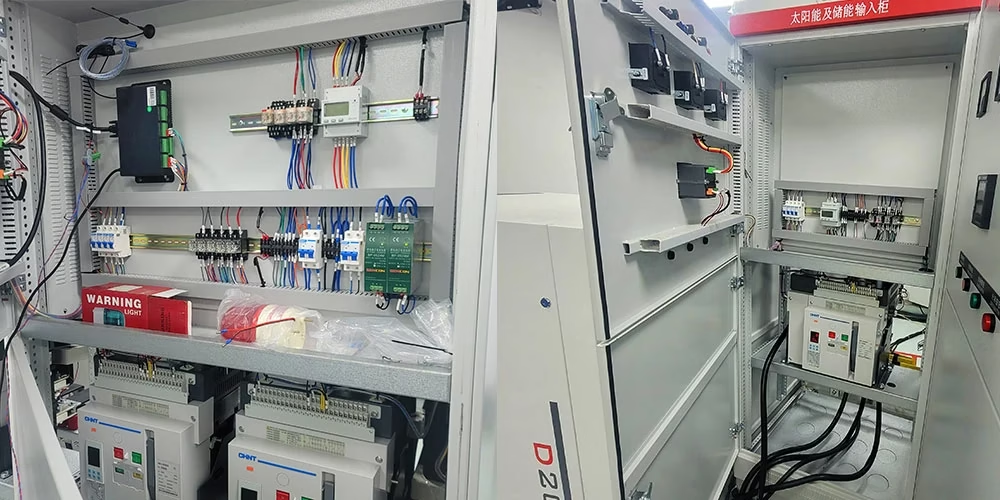
Contract Capacity
Think of the capacity price—often called the “basic electricity price” or “demand charge”—as a fee that reflects your facility’s peak power draw. In essence, you pay this charge because your utility must build and maintain enough infrastructure to always meet your maximum potential demand.
Here’s a simple way to see it in action: Imagine a factory that requires a 500 KVA transformer. Now, if the local utility rate is set at ¥20 per KVA each month, that factory’s monthly basic charge is locked in at 500 * 20 = ¥10,000. The key thing to remember is that this cost remains the same, regardless of whether the factory uses a little or a lot of energy that month.
Mainstream Configurations for C&I BESS
A typical Commercial and Industrial (C&I) Battery Energy Storage System (BESS) brings together a few key components to function. Essentially, the system relies on its core—the BESS battery itself—to store all the electrical energy. Now, while several battery technologies are available, lithium-ion types currently lead the market, and for good reason: they offer high energy density, strong charge/discharge efficiency, and incredibly fast response times. But of course, a battery can’t operate alone. That’s why supporting this core are crucial components like the power conversion system (PCS) and sophisticated control systems, which actively manage power flow and guarantee the entire system runs safely.
Key Application Scenarios for C&I BESS
Businesses across numerous industries are now tapping into the real-world benefits of Commercial & Industrial (C&I) energy storage. Let’s explore some of the key applications:
- In high-energy industries such as metallurgy, cement, and chemicals, companies are deploying Battery Energy Storage Systems (BESS) to actively control their peak power demand. As a result, they significantly cut down on costly capacity charges.
- Similarly, at communication base stations, these systems go beyond mere backup power. By building on existing UPS infrastructure, a BESS allows operators to perform daily energy arbitrage. Consequently, they not only ensure system reliability but also unlock consistent cost savings.
- When it comes to data centers, uninterrupted power is non-negotiable. To meet this need, engineers can configure a BESS with low-voltage ride-through functionality. This key capability helps avoid expensive data loss and operational disruptions during grid fluctuations.
- The benefits are just as clear for charging and battery swap stations. Here, a BESS effectively performs a “virtual expansion,” boosting the site’s charging capacity without costly grid upgrades. Moreover, the battery packs inside swap stations collectively function as a distributed large-scale storage asset.
- Finally, industrial parks are increasingly using these systems as centralized energy management hubs. They install either centralized or distributed BESS setups to optimize electricity consumption across multiple facilities. That said, it’s worth noting that the total size of these systems is always constrained by the park’s overall energy demand limit.

Air-Cooling for BESS
An air-cooled Battery Energy Storage System (BESS) uses forced air convection to manage its temperature. Essentially, it pulls in air and pushes it across the battery cells with fans, carrying the heat away.
This method works best for smaller-scale systems or for applications where the charge and discharge rates stay relatively low—typically under 0.5C. Its biggest advantage lies in its straightforward design and lower upfront cost.
However, air cooling does have a key limitation: it often has a hard time maintaining a consistent temperature throughout the entire battery pack. This can lead to uneven wear on the cells over time.
Liquid-Cooling for BESS
Now, let’s look at liquid cooling. A liquid-cooled BESS circulates a coolant—typically a glycol-water mixture—through pipes or cold plates that are built directly into the battery modules. This setup creates a highly efficient and direct heat exchange process.
Because this approach delivers superior cooling performance and maintains excellent temperature consistency, most industry experts now view liquid cooling as the mainstream solution for thermal management in modern energy storage systems.

